 It is now 30 years since Melbourne’s ATV0 made history and changed its broadcast frequency to Channel 10.
It is now 30 years since Melbourne’s ATV0 made history and changed its broadcast frequency to Channel 10.
When Reg Ansett was awarded the licence to operate Melbourne’s third commercial channel in 1963, he was given the frequency of Channel 0 – down the low end of the dial, and, being a ‘new’ frequency, most older TV sets did not have a Channel 0 position on the dial. The conversion of older sets and antennas to include access to Channel 0 was a short term financial boon for TV repairers and installers as viewers moved to ensured that they were ready to ‘Go for 0’ when it eventually went to air on 1 August 1964, although test transmissions for the new channel had started as early as May.
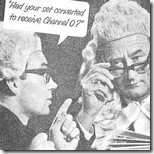 The challenges inherent in the low broadcast frequency, such as deficiencies in reception across large portions of Melbourne, coupled with fierce competition from older rivals HSV7 and GTV9, made life tough for Ansett’s new channel – resulting in it often struggling in third place in the ratings. Even though Ansett had budgeted that his new channel, ATV0, would be making a profit after three years with a lineup heavy in Australian content, it would be many more years before it would end up paying dividends.
The challenges inherent in the low broadcast frequency, such as deficiencies in reception across large portions of Melbourne, coupled with fierce competition from older rivals HSV7 and GTV9, made life tough for Ansett’s new channel – resulting in it often struggling in third place in the ratings. Even though Ansett had budgeted that his new channel, ATV0, would be making a profit after three years with a lineup heavy in Australian content, it would be many more years before it would end up paying dividends.
By 1969, still faced with the challenges of the low-end frequency and trying to break the dominance of its two older rivals, Ansett ended up underwriting a boxing match between Australian title holder Lionel Rose and British champion Alan Rudkin. The match was a huge ratings hit, scoring 67 per cent of the viewing audience, setting a ratings record that would not be broken until the Sydney Olympic Games more than thirty years later.
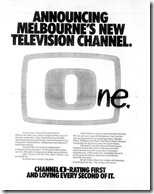 But despite the massive audience boost from the Rose-Rudkin title fight, it would be 1973 before ATV0 would post its first weekly ratings win – heralded with full-page newspaper ads (pictured) – largely due to the controversial, top-rating soapie Number 96, which had dominated ratings around the country.
But despite the massive audience boost from the Rose-Rudkin title fight, it would be 1973 before ATV0 would post its first weekly ratings win – heralded with full-page newspaper ads (pictured) – largely due to the controversial, top-rating soapie Number 96, which had dominated ratings around the country.
By the late-‘70s, ATV0 was in ratings decline. By this stage it had bid farewell to Number 96 and other major ratings drawcards The Box and Blankety Blanks. The landmark US mini-series, Roots, had delivered massive ratings but the boost to the station was short lived. By the end of 1978 the Federal Government had received an application from ATV0 for permission to change its broadcast frequency to Channel 10 – giving it a stronger broadcast signal at the top of the dial which would hopefully eliminate any gaps in the old channel’s coverage and would also provide an opportunity to re-launch the struggling ATV0 as a “new” channel and would also match up the station with the same frequency as its Sydney network partner, TEN10. The Government approved the changeover early in 1979.
 The hitch in changing to Channel 10 was that it would conflict with neighbouring Gippsland channel GLV10, causing interference by sharing the same frequency. ATV0 then agreed to pay the costs incurred by GLV to have it moved to an alternative frequency, Channel 8. It was not a cheap exercise, as ATV paid around $800,000 to fund GLV’s conversion costs and also to fund the distribution of filters to attach to viewers’ sets – as it was apparent that GLV on Channel 8 would interfere in areas where viewers could also receive Melbourne channels HSV7 and GTV9 and the filters would rectify that.
The hitch in changing to Channel 10 was that it would conflict with neighbouring Gippsland channel GLV10, causing interference by sharing the same frequency. ATV0 then agreed to pay the costs incurred by GLV to have it moved to an alternative frequency, Channel 8. It was not a cheap exercise, as ATV paid around $800,000 to fund GLV’s conversion costs and also to fund the distribution of filters to attach to viewers’ sets – as it was apparent that GLV on Channel 8 would interfere in areas where viewers could also receive Melbourne channels HSV7 and GTV9 and the filters would rectify that.
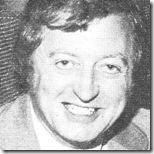 In preparing the changeover to Channel 10, ATV managed to sign up one of its former leading stars, Graham Kennedy (pictured), to front the new channel’s advertising campaign – including radio and television commercials. It was no mean feat, as only 18 months earlier Kennedy was less than subtle in his criticism of ATV0 due to the channel’s poor performance impacting on his Blankety Blanks game show. Kennedy told The Age that money was certainly a factor in accepting the position of being the channel’s spokesman during the conversion period: “They did offer me a very attractive deal. And it immediately appealed to me because it will be an historic occasion. A television station changing its frequency will probably never happen again in our lifetimes.”
In preparing the changeover to Channel 10, ATV managed to sign up one of its former leading stars, Graham Kennedy (pictured), to front the new channel’s advertising campaign – including radio and television commercials. It was no mean feat, as only 18 months earlier Kennedy was less than subtle in his criticism of ATV0 due to the channel’s poor performance impacting on his Blankety Blanks game show. Kennedy told The Age that money was certainly a factor in accepting the position of being the channel’s spokesman during the conversion period: “They did offer me a very attractive deal. And it immediately appealed to me because it will be an historic occasion. A television station changing its frequency will probably never happen again in our lifetimes.”
There was also talk that Kennedy would also have the opportunity to present a new tonight show on the revamped channel, though was not to be.
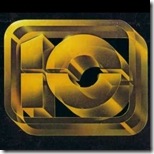 By January 1980, the channel was ready to flick the switch. Thousands of brochures had been distributed to households around Melbourne to advise of the changeover, while a telephone hotline had been set up to enable viewers to get assistance in retuning their sets from Channel 0 to 10. And without much time to spare, GLV10 made the switch to GLV8 on 17 January.
By January 1980, the channel was ready to flick the switch. Thousands of brochures had been distributed to households around Melbourne to advise of the changeover, while a telephone hotline had been set up to enable viewers to get assistance in retuning their sets from Channel 0 to 10. And without much time to spare, GLV10 made the switch to GLV8 on 17 January.
Then the big day – 20 January – had arrived. ATV0 had signed off for the last time at around 3.00am that morning – the last program to air on the channel was the 1948 movie, Angel In Exile. Then, just prior to 2.00pm on the Sunday afternoon, Kennedy, standing atop of the channel’s studio building in Nunawading, welcomed viewers to Channel 10: “Come on up to Ten, you’ll enjoy the view!” Then the new ATV10 broadcast its launch promotion, ‘You’re On Top With 10’, with catchy lyrics sung by Mike Brady.
The first program to follow on ATV10 was 10’s Summer Sunday, a three-hour outside broadcast from Torquay Beach, south of Melbourne, hosted by former ATV0 newsreaders Bruce Mansfield and Annette Allison.
Jana Wendt presented ATV10’s first Eyewitness News bulletin at 6.00pm – and barely a few months later Ms Wendt would be promoted to co-anchoring the main weeknight bulletin on the channel. Kennedy was back on air at 6.30pm, presenting a one-hour special, You’re On Top With Ten, previewing some of the upcoming shows on the new channel, including the documentary series The Human Face Of China, mini-series Water Under The Bridge and an Australian adaptation of the British comedy Are You Being Served?, as well as the return of familiar titles including Prisoner, The Restless Years, Peter Couchman Tonight and Young Talent Time.
At 7.30pm, ATV10 presented the movie-length debut of the network’s new highly-anticipated, big-budget soap opera, Arcade, from the producers behind the former Number 96. Despite ambitions for the series to be the flagship of the network’s lineup heading into the new decade, the series failed to grab even a modest share of the audience and was taken off the air six weeks later.
Following Arcade was the Sunday night movie, Summerfield, starring John Waters, Nick Tate and Elizabeth Alexander.
Viewers that had still yet to make the change to their sets from Channel 0 to 10 were given a slight reprieve, as ATV would simulcast on both channels for an interim period to enable viewers some extra time to make the necessary adjustments and to get used to the new channel position.
Industry magazine B&T reported at the time that the changeover of ATV from 0 to 10 would be the first time that a TV station in a major metropolitan market had changed frequencies – outside of the United States.
The changeover from Channel 0 to 10 in Melbourne led to the network changing its name from the 0-10 Network to Network Ten, with its Sydney, Melbourne and Adelaide stations all broadcasting on the Channel 10 frequency. Although Brisbane’s network partner, TVQ0, would continue to broadcast on the Channel 0 frequency until the late ‘80s.
Source: The Age, 12 October 1978. The Age, 10 January 1980. The Age, 17 January 1980. TV Week, 19 January 1980.
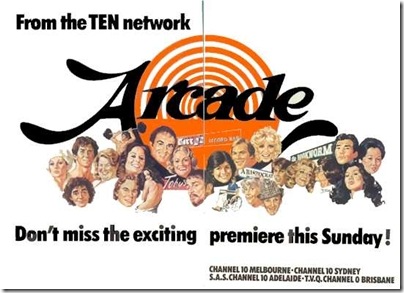
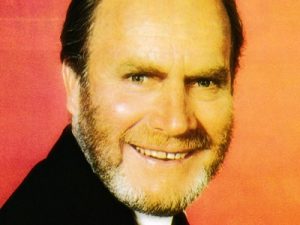
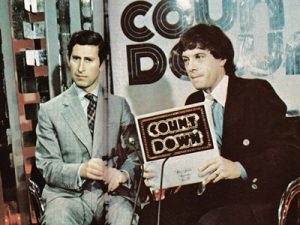
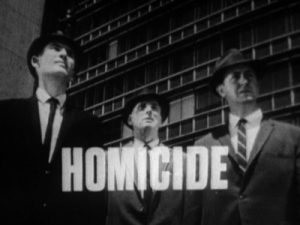
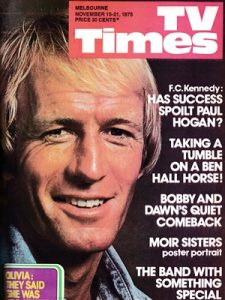
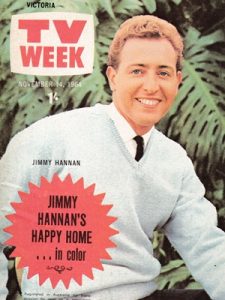
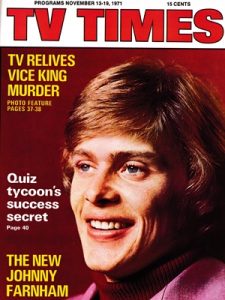
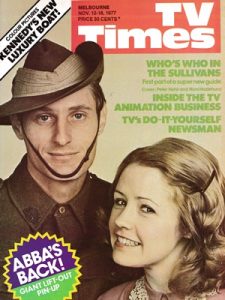
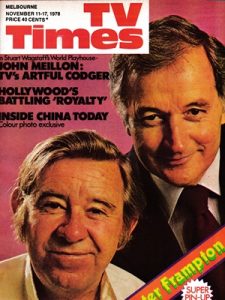
I can remember watching Arcade and even I couldn't be interested after the first episode at age 11 lol.
Pretty complicated stuff the ATV switch was. For it was this one event that suddenly saw ATV, bathed in a new light by viewers, as their news was soon #1 at 6.
Brisbane's “network black sheep” status also started on this day, as they were the last commercial “0” standing.
Channel 0 would return to Melbourne later that year with the commencing of transmission for Channel 0/28.